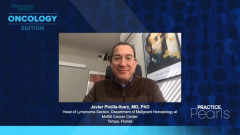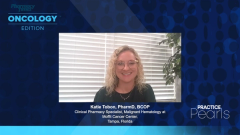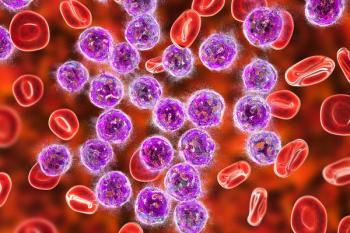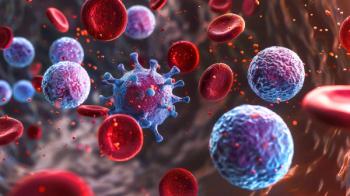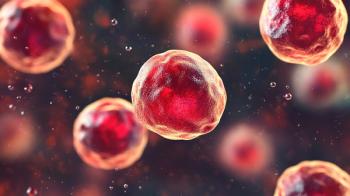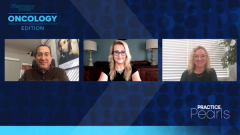
Incidence and Risk of CLL
Javier Pinilla-Ibarz, MD, PhD; Lisa Nodzon, PhD, ARNP, AOCNP; and Katie Tobon, PharmD, BCOP, describe the incidence of CLL and discuss factors that may increase the risk of disease.
Episodes in this series

Javier Pinilla-Ibarz, MD, PhD: Hello, and welcome to this Pharmacy Times® Physicians Practice Pearls® discussion titled “Understanding the Treatment Landscape for CLL.” My name is Javier Pinilla-Ibarz. I’m the head of the lymphoma section of the H. Lee Moffitt Cancer Center & Research Institute in Tampa, Florida. I work in the department of malignant hematology. Joining me in this discussion are Katie Tobon, a clinical pharmacy specialist at the malignant hematology section of the Moffitt Cancer Center, and Lisa Nodzon, an advanced registered nurse practitioner at the malignant hematology division of the Moffitt Cancer Center.
We’re going to talk about topics pertaining to the management of CLL [chronic lymphocytic leukemia], and we’ll provide an overview of the treatment landscape. Besides concentrating on present and new fixed-dose regimens and review the role of BTK inhibitors in the treatment of this condition. We’ll discuss the management of toxicities to provide patients with optimal care. We have an agenda. First is unmet needs in CLL. Who are the most common group of patients? How is this specific age group impacted more?
Lisa Nodzon, PhD, ARNP, AOCNP: CLL is the most common type of adult leukemia, with around 21,000 cases expected to be diagnosed in the United States this year. It’s typically a disease of older individuals. By that we mean over age 50. It’s rare to see in the younger population. It carries a median age of diagnosis around 65 to 70 years and has a slightly higher preponderance in men vs women.
Javier Pinilla-Ibarz, MD, PhD: As we all know, it’s a disease of the older population, which definitely is the population we have in Florida because those people typically move here. We’re going to discuss later how to apply different therapeutic strategies to different populations. In the old times, we used to differentiate patients feed vs no feed, all vs Johne disease. It’s still important to understand that the most common scenarios are in older patients, sometimes with a comorbid condition. Is there any condition that increases the risk for CLL?
Katie Tobon, PharmD, BCOP: Older age, in general. Also, Agent Orange exposure increases the risk of CLL, as it does for many other malignancies. There is a little familial inheritance, around 10%, and also genetic and environmental factors. Dr Pinilla-Ibarz, are there any other risk factors that you go over with your patients when you see newly diagnosed patients?
Javier Pinilla-Ibarz, MD, PhD: Not really. Many patients discuss that they’re concerned about previous exposure radiation, or even some pesticides, which are really unclear. For sure some, as you know the radiation exposure has mostly, or more higher incidence of myeloid malignancies. It could have some relation, but it’s unclear. As pointed out, it seems that Agent Orange, CLL, and other types of cancer is the one that is received mostly in our veterans. You really get hit with them all.
Transcript Edited for Clarity
Newsletter
Stay informed on drug updates, treatment guidelines, and pharmacy practice trends—subscribe to Pharmacy Times for weekly clinical insights.


